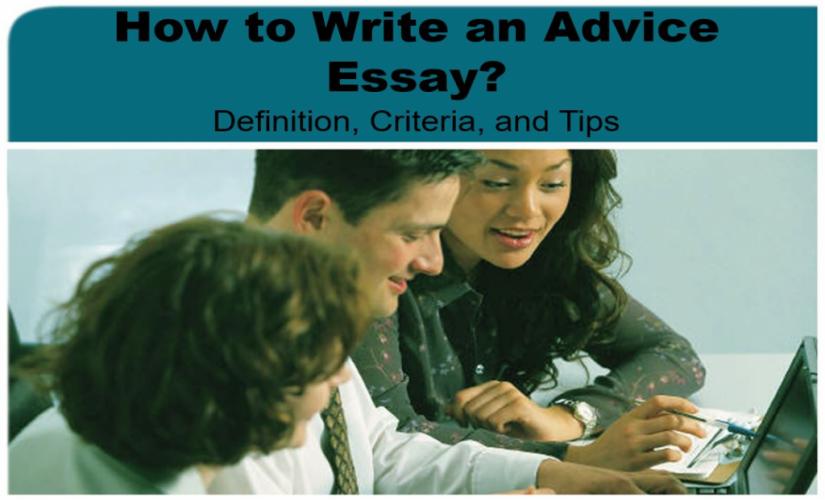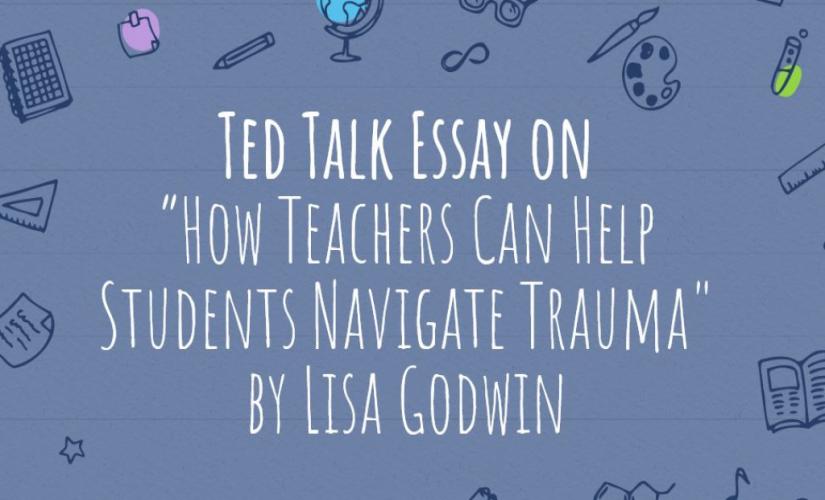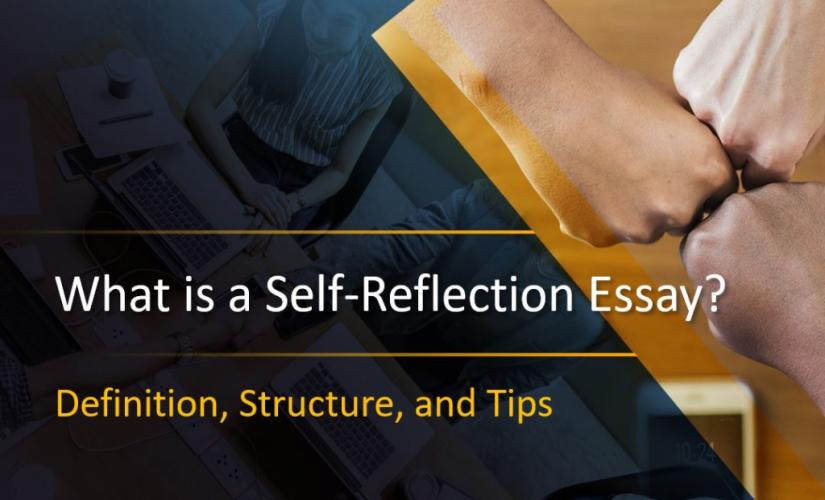An advice essay enlightens people on specific subjects. Basically, quality papers contain substantial and accurate evidence, proper organization, and presentation. In this case, an introduction includes catchphrases and strong thesis statements. Then, each body paragraph expounds on a single idea. Besides, providing major weaknesses of a specific recommendation appeals to readers and their interest in reading such compositions. Moreover, a concluding passage summarizes an entire document. As a result, good writers cite all external sources used to avoid plagiarism and provide quality work. Hence, in order to provide a good paper, people need to know how to write an advice essay correctly and its practical guidance, which is described below.
General Aspects
Writers advise readers on particular issues affecting their lives. In particular, advisory essays contain compelling arguments and evidence. Basically, adequate research leads to quality papers. Then, paragraphs provide a topic sentence, real-life examples, and explanations. Although outstanding papers comprise appropriate information, proper organization, and irrefutable evidence, writers must follow standard academic guidelines. In particular, to write an advice essay, people clearly state a specific guidance they are giving, support it with personal experiences, practical tips, and expert opinions, and conclude with a summary, which emphasizes potential benefits of following this tip.
What Is an Advice Essay and Its Purpose
According to its definition, an advice essay is a persuasive composition that guides readers on a particular subject and provides them with practical recommendations and insights. Basically, writers need to discuss a specific topic, depending on a target audience. The main purpose of writing an advice essay is to propose helpful guidance that can assist individuals in resolving specific issues, making informed decisions, or enhancing their overall well-being (Greetham, 2023). By presenting well-reasoned arguments and credible information, authors build a sense of trust with intended readers and empower them with valid tools they need to address their concerns effectively. Moreover, detailed and balanced evidence directly influences an audience’s response (Karlsson et al., 2020). As a result, an advisory essay serves as a bridge between writer’s experiences or insights and readers’ needs and offers valuable recommendations that can lead to improved outcomes, practical solutions, and a better quality of life. In turn, the length of an advice essay depends on academic levels, topics under discussion, and the specific assignment requirements, while general guidelines are:
High School:
- Pages: 1-2 pages
- Words: 250-500 words
College:
- Pages: 3-5 pages
- Words: 750-1,250 words
University (Undergraduate):
- Pages: 5-7 pages
- Words: 1,250-1,750 words
Master’s:
- Pages: 8-10 pages
- Words: 2,000-2,500 words
Ph.D.:
- Pages: 10-15 pages
- Words: 2,500-3,750 words

Format
| Section | Content |
|---|---|
| Title | A clear and engaging title that reflects an essay’s topic. |
| Introduction | Briefly introduce a discussed topic and its relevance. |
| State a particular purpose of a paper and what it aims to achieve. | |
| Thesis Statement | A concise statement summarizing a main suggestion or recommendation. |
| Body Paragraph 1 | Introduce a first key piece of advice. |
| Provide supporting details, examples, and explanations. | |
| Body Paragraph 2 | Introduce a second key piece of advice. |
| Provide supporting details, examples, and explanations. | |
| Body Paragraph 3 | Introduce a third key piece of advice. |
| Provide supporting details, examples, and explanations. | |
| Additional Body Paragraphs | Repeat a structure above for any additional guidance pieces. |
| Conclusion | Summarize key points of advice provided. |
| Restate a particular significance of a main hint. | |
| Provide a closing thought or call to action. | |
| List of References | List any sources cited in an advice essay and formatted in MLA, APA, Chicago/Turabian, Harvard, or others (if applicable). |
Noted: Some sections can be added, deleted, or combined with each other, depending on a length of a paper and its scope of recommendations. To start an advice essay, people begin with an engaging introduction, which outlines a main guidance they will be giving and highlights its importance or relevance.
Steps on How to Write an Advice Essay
To write an advice essay when you have no ideas, you should start by brainstorming topics, conducting preliminary research to spark your interest, and creating an outline to organize your thoughts for guidance. In turn, general steps for writing a good advising essay are:
- Choose a Topic for Your Advice: Start by selecting a relevant and meaningful topic that you have experience or knowledge in.
- Identify Your Target Audience: Determine who your audience is and what proposal would be most helpful to them.
- Conduct Research: Gather information, statistics, and expert opinions to support your recommendation.
- Create an Outline: Organize your central points and supporting details into a logical structure.
- Write a Strong Introduction: Begin with an engaging opening that introduces a defined topic and states a primary purpose of your essay.
- State Your Thesis: Clearly present your main hint you will be giving in your paper.
- Develop Body Paragraphs: Write detailed paragraphs that provide practical tips, personal experiences, and supporting evidence for your guidance.
- Use Examples: Illustrate your points with relevant examples to make your suggestion more relatable and credible.
- Address Counterarguments: Consider and refute any potential objections or alternative viewpoints to strengthen your hint.
- Conclude Effectively: Summarize your key points, reiterate potential benefits of following your advice, and end with a call to action or final thought.
Criteria
Relevance
Compelling essays have adequate supporting evidence. In this case, vague information misleads an intended audience (Chhatre, 2020). Besides, substantiations provided should support central points of view to follow principal rules on how to write an advice essay.
Organization
Organizing ideas well helps readers to understand a particular content. For example, one should include an introduction, body, and concluding paragraphs when writing an advisory essay (Warburton, 2020). Basically, these three sections ensure such a composition has a required flow of information. In turn, opening and closing sections should support its main arguments.
Accuracy
Writers must present accurate information in their complete documents. For instance, writing an advice essay demonstrates an adequate understanding of a topic discussed (Mewburn et al., 2021). Then, an overall argument includes a detailed analysis of a particular issue. In turn, evaluating different points of view convinces target readers.
Presentation
A proper arrangement of ideas includes a right length, readability, and a few grammatical errors. As a result, to conclude an advice essay, people summarize key points of their recommendations, emphasize their benefits, and leave readers with a final thought or call to action (Greetham, 2023). Hence, readers must be satisfied with a particular hint after reading an entire paper.
Writing Tips
Choosing and Researching a Topic
People need to identify a suitable theme for a target audience as a first step for their writing. Basically, such a selection targets a specific behavior that requires change. Moreover, writers may consider age, gender, occupation, and religion elements of intended readers (Mewburn et al., 2021). In turn, adequate research leads to quality arguments. Besides, appropriate sources include journal articles, newspapers, websites, and books (Holmberg & Sperlich, 2021). In turn, some examples of sentence starters for beginning an advice essay include:
- When facing a complex and often overwhelming challenge of [specific issue], it can be difficult to know where to begin, but, with a right guidance, you can … .
- One of the most effective strategies for overcoming [a particular problem] and achieving lasting success is to adopt a series of practical steps that … .
- If you are currently struggling with [specific challenge], it is crucial to consider a following advice, which has been proven to help individuals in similar situations … .
- Considering an uncommon nature of [specific situation] can seem hard at first, but, when following these carefully considered recommendations, you can … .
- To significantly improve your [aspect of life], it is essential to implement these key practices, which have been shown to bring positive results … .
- Many people find themselves at a loss when confronted with [specific issue], but, by understanding and applying following tips, you can effectively manage and overcome … .
- A particular key to overcoming [specific challenge] lies in understanding underlying factors and employing a methodical approach that includes … .
- Whether you are dealing with [describing a situation] or simply looking to enhance your current practices, a following guidance can provide you with good tools and insights needed to … .
- For those looking to achieve [a particular goal], it is important to remember that success is often a result of consistent effort and adherence to following principles of … .
- Dealing with [specific problem] requires careful consideration of several important steps, each of which plays a crucial role in ensuring a positive outcome … .
Structure
Advisory compositions begin with a catchphrase and a thesis statement. For example, a good catchword really grabs readers’ attention (Warburton, 2020). In this case, a central claim contains primary arguments made. Moroever, clear and concise sentences enhance an overall quality of a paper if authors understand how to write an advice essay and follow its main features. In turn, including weaknesses of a particular recommendation given makes a whole writing compelling.
Paragraphs
To write an advice sheet, people organize their tips and recommendations into clear, concise sections with headings, provide actionable steps, and include any relevant examples or resources for further guidance. Basically, each body paragraph covers a single idea (Warburton, 2020). In this case, a first sentence contains a topic sentence. Then, real-life examples and clear explanations follow a central claim. Finally, one must end a passage with a summative and linking phrase.
Conclusion
A closing paragraph must pull all the main points together, restate a central argument differently, and avoid new evidence and facts. Basically, an advice essay is important because such a composition provides valuable proposal and practical tips that can help readers to improve their lives or solve specific problems (Mewburn et al., 2021). Hence, people should provide an effective closing to end their papers logically.
Referencing
One must acknowledge information borrowed from other sources. For instance, writers should follow necessary academic standards to avoid all forms of plagiarism (Chhatre, 2020). Moroever, quotations and paraphrases require proper citations. In general, a suitable bibliography contains authors’ names, sources’ titles, publication dates and places, and producers. Hence, students must follow standard guidelines of a required referencing style, such as MLA, APA, Chicago/Turabian, Harvard, or others, if they want to learn how to write an advice essay correctly.
Proofreading and Rewriting
Advice essays must contain minimal grammatical and syntax errors. Basically, proofreading allows writers to identify all possible faults (Greetham, 2023). In turn, rewriting a first draft improves an overall quality of a written composition. Hence, people need to provide a quality product that is worth reading.
What to Include
| Element | Description |
|---|---|
| Personal Stories | Share relevant personal experiences that illustrate a particular advice being given. |
| Practical Tips | Provide actionable and practical steps that readers can take to follow. |
| Common Mistakes | Highlight common mistakes people make related to an assigned topic and how to avoid them. |
| Benefits of a Recommendation | Explain positive outcomes that can result from following a specific hint. |
| Expert Insights | Include opinions or tips from experts to add credibility to a central idea. |
| Counterarguments | Address potential objections or reasons why people might not follow a presented tip and refute them. |
| Quotes and Proverbs | Use relevant quotes or proverbs to emphasize a recommendation. |
| Statistics and Research | Provide relevant data or research findings to support a main tip. |
| Analogies and Metaphors | Use analogies or metaphors to make a discussed suggestion more relatable and understandable. |
| Success Stories | Share some stories of people who have successfully followed a particular advice and achieved positive results. |
| Step-by-Step Instructions | Break down a recommendation into clear, sequential steps that readers can easily follow. |
| Case Studies | Include detailed examples of specific cases where a specific tip was successfully applied. |
| Visual Aids | Suggest using charts, diagrams, or other visual aids to illustrate points. |
| Personal Reflections | Reflect on what you learned from your own experiences related to a particular hint. |
| Challenges and Solutions | Identify potential challenges readers might face and provide solutions to overcome them. |
| Comparative Analysis | Compare different methods or strategies related to a specific proposal, highlighting the pros and cons of each. |
| Ethical Considerations | Discuss potential ethical aspects or implications of a discussed instruction. |
| Long-Term Impact | Highlight long-term benefits or consequences of following a hint. |
| Future Trends | Talk about how future trends might impact a relevance or application of a provided recommendation. |
| Real-World Applications | Provide examples of how a discussed suggestion can be applied in different real-world scenarios. |
Common Mistakes
- Lack of Clarity in Thesis Statement: Failing to clearly state a main advice or recommendation, making it difficult for readers to understand an essay’s purpose.
- Vague or General Advice: Providing a specific guidance that is too broad or unspecific, which can leave readers confused about how to apply it to their situation.
- Insufficient Support: Not backing up hints with concrete examples, evidence, or detailed explanations, which can weaken an overall credibility of presented ideas.
- Overloading With Information: Including too many pieces of advice in one paper, leading to an overwhelming and unfocused narrative.
- Ignoring a Target Audience: Failing to consider specific needs, backgrounds, and perspectives of a target audience, which can result in an irrelevant or unhelpful tip.
- Lack of Structure: Poor organization and flow, making it difficult for readers to follow a logical progression of a central advice.
- Inconsistent Tone: Switching between formal and informal tones, which can confuse readers and undermine an essay’s authority.
- Neglecting Usefulness: Offering a particular suggestion that is impractical or unrealistic for an average reader to implement.
- Repetitiveness: Repeating same points or tips without adding new insights, which can make a composition redundant and boring.
- Grammar and Spelling Errors: Allowing grammatical mistakes, typos, and spelling errors to persist, which can distract readers and reduce an overall professionalism of an advisory essay.
Summing Up
An advice essay enlightens potential readers on a specific subject. In particular, quality papers contain relevant information, proper organization and presentation, and conclusive evidence. Then, an advisory introduction comprises a catchword and a thesis statement. Moroever, each body paragraph expounds on a single idea. In turn, a closing passage brings a whole work to closure. As a result, good writers acknowledge information borrowed from credible sources because they are familiar with key rules on how to write an advice essay.
References
Chhatre, V. E. (2020). Some modest and practical advice for undergraduate researchers. The Bulletin of the Ecological Society of America, 101(4), 1–14. https://doi.org/10.1002/bes2.1745
Greetham, B. (2023). How to write better essays. Bloomsbury Academic.
Holmberg, H.-C., & Sperlich, B. (2021). Some personal advice concerning how to write precise, concise and eloquent research articles. Frontiers in Sports and Active Living, 3, 1–5. https://doi.org/10.3389/fspor.2021.648929
Karlsson, J., Reider, B., Wojtys, E. M., & Zaffagnini, S. (2020). Tips and tricks for building a good paper: What editors want. Journal of Experimental Orthopaedics, 7(1), 1–5. https://doi.org/10.1186/s40634-020-00273-3
Mewburn, I., Firth, K., & Lehmann, S. (2021). Level up your essays: How to get better grades at university. NewSouth.
Warburton, N. (2020). The basics of essay writing. Routledge.


